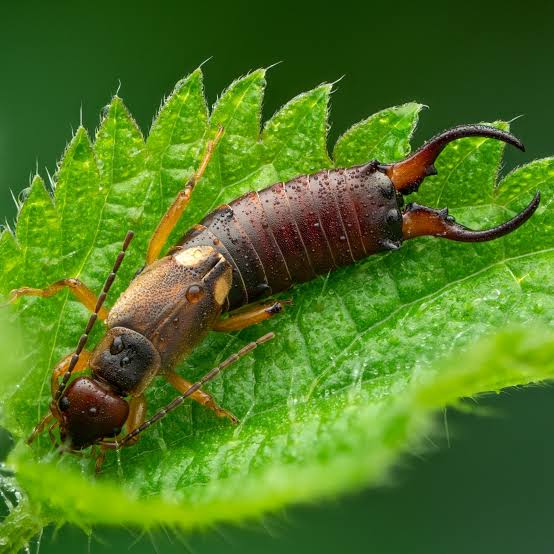Earwigs

Description
Forficula Auricularia, the common earwig, has a smooth and slender flat body with a beadlike antenna. Earwigs have two leathery tergites which can hide wings on some species, and two large pincers at the abdomen tip (modified cerci that act as a repellent for predators. The shape and size of these pincers help identify male earwigs; however, female earwigs' pincers do not vary as much.
The most common earwig is the European earwig with a reddish-brown color, functional wings and can fly. These earwigs have teeth at the base of their cerci which can help you distinguish them from other species of earwigs. These insects can grow to ¼ to 1 ¼ inches –it varies based on species. Half of the 30 species of Earwigs in North America are invasive. [1]
Taxonomy
Kingdom: Animalia
Phylum: Arthropoda
Class: Insecta
Order: Dermaptera
[2]
Habitat and Feeding Habits
Earwigs like moist, cool, dark places. You will likely find them under bark, stacked lumber, bundles of newspaper, rocks, leaves, etc. Earwigs with wings are often attracted to lights during the evening. Most earwigs are scavengers, preying on smaller invertebrates and chewing on living and dead plants. Some earwigs, like the native ring-legged earwig, are predators and enjoy preying on aphids, caterpillars, termites, slugs, and other smaller invertebrates. [1]
Life Cycle
Earwigs undergo an incomplete metamorphosis. Typically living for 1-3 years, the earwigs grow from an egg to a nymph to an adult in 1-4 months, depending on the temperature. Earwigs will mate in autumn and stay together through the winter into the spring. Once they mate, the male leaves and the female lays up to 80 eggs. After earwigs lay their eggs, they tend to the nest, cleaning and defending it, eventually taking over the motherly role of feeding their young after they hatch. The mother stays until they have their first molt, and then they go through 5 or 6 more molts before becoming adults. [3]
References
1. Earwigs. Missouri Department of Conservation. (n.d.). https://mdc.mo.gov/discover-nature/field-guide/earwigs
2. Order dermaptera - earwigs. BugGuide.Net. (n.d.). https://bugguide.net/node/view/2709
3. Earwigs. Defense Pest Control. (n.d.). https://www.defensepestcontrol.com/learning-center/earwigs/#:~:text=These%20pests%20are%20brown%20or,4%20months%2C%20depending%20on%20temperature.
4. Google. (n.d.). Is encrypted-tbn3.gstatic.com safe?. Google Search Community. https://support.google.com/websearch/thread/215432303/is-encrypted-tbn3-gstatic-com-safe?hl=en